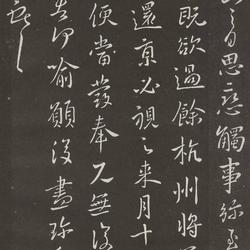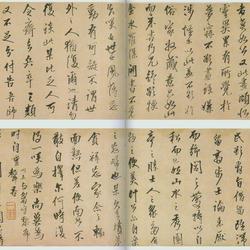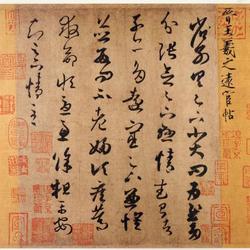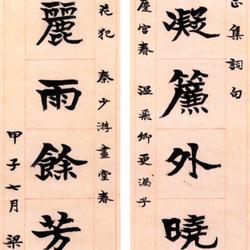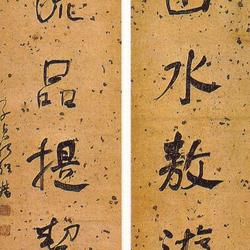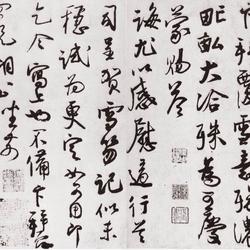Yishan stone carving Li Sishu in the 28th year of Qin Shihuang (219 BC) Height 218 cm, width 84 cm Due to the long history and war, the original stone was burned by wildfire. This stone was carved by Zheng Wenbao based on the rubbing of the original stone in the fourth year of Chunhua (AD 993) of Emperor Taizong Zhao Guangyi of the Song Dynasty. There is an inscription by Zheng Wenbao on the underside of the stele. There are many copies of "Yishan Carved Stones", but this stone is the best. In Qin's unification cause, a major achievement was the unification of writing. Chinese characters have a history of more than 4,000 years. From the earliest symbols that appeared on pottery, the oracle bone inscriptions carved on animal bones and tortoise shells, the bronze inscriptions cast on bells and tripods, and the Taishi Zhouwen (big seal script) in the reign of King Xuan of Zhou Dynasty, only in 221 BC, After Qin Shihuang unified the six kingdoms, Li Si and others unified Chinese characters with Xiaozhuan. Li Si once said: The large seal script was created in ancient times and has been widely circulated. However, due to the long history, many people cannot recognize it. So now the complicated strokes are deleted, the variant fonts are omitted, and it is improved into Xiaozhuan. This is the first writing reform in Chinese history, which plays an important role in the development of Chinese culture. In the more than ten years after Qin Shihuang unified China, in order to strengthen his control over the country, he visited various places five times. In the twenty-eighth year of the Qin Dynasty (219 BC), when he was patrolling the Yishan Mountain in Dengtao County, the hometown of Qilu in Shandong Province (now southeast of Zoucheng, Shandong Province), he climbed up and looked far away, full of passion, and said to the ministers: "Since I am here , you must leave an inscription and pass it on to future generations." Li Si immediately wrote it in seal script and sent someone to carve a stele on Mount Yi. This is the famous "Yishan Carved Stone" of Qin Dynasty. Li Si's calligraphy was first-rate in the Qin Dynasty. He also has a set of calligraphy theories. When talking about the method of using the pen, he said: When writing, the pen should be turned quickly and the folding should be fast, like an eagle swooping and circling. Holding the pen back is like a fish swimming in water, and moving the pen is like moving clouds over a landscape. The weight and ease of the strokes should be natural and integrated, generous and beautiful. It can be seen from "Yishan Stone Carvings" that Li Si's calligraphy is strong and smooth, with round lines, well-proportioned structure, and even thickness of stipples. It has the beauty of patterns and the potential of flying. The superb calligraphy skills overshadowed the predecessors and scattered the talents of the later generations, making it difficult for all those who wrote Xiaozhuan to enter the situation, and became the best copying and learning calligraphy for future generations.

